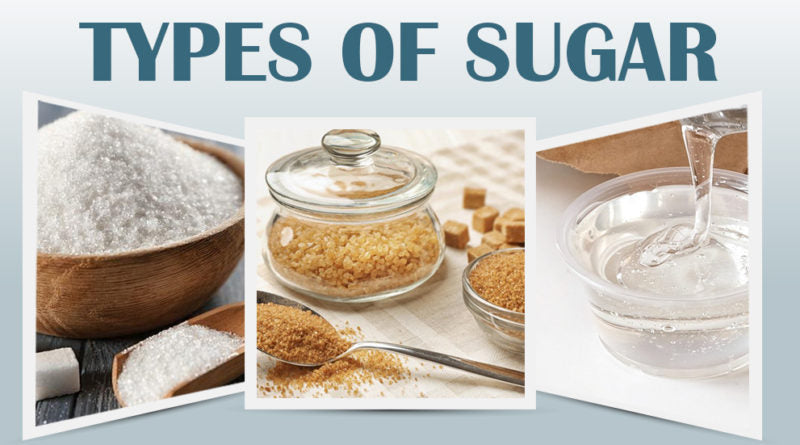
TYPES OF SUGAR
Share
Types of Sugar
All types of sugar are made by juices extracted from plant sources like sugar beet or sugarcane, then processed by a mechanical process. Many types of sugar can be produced via minimal adjustments in the process of cleaning, crystallising or drying. Various crystal sizes and compositions provide unique functional characteristics to the sugar, which makes it suitable for different foods and beverages. Sugar colour is essentially determined by the amount of molasses present or added to the crystals, giving pleasurable flavours and also altering the moisture content. Heating sugar can also change its colour and flavour, this process is known as caramelisation. Some types of sugar are used only by the food industry and are not available in the market for retail business.
Types:
Broadly sugar can be classified into 3 categories like white sugar, brown sugar and liquid sugar.
1. White Sugar: Based on the size of granules and use of the confectionery, white sugar can be found in the following forms -
- Regular Or White Granulated Sugar: This type of sugar is generally used in household purposes. They have small size grannies which increases its acceptance and also help in bulk handling. This sugar type is also known as all-purpose sugar.

- Confectioneries Or Powdered Sugar: This type of sugar is made from grinding the granular sugar into a smooth refined powder form. Commercially available formulas have a small amount of about 3-6 % of cornstarch added in it to prevent caking or lump formation. This is often used for icing in confectionery items.

- Fruit Sugar: It has a smaller and uniform crystal size than regular sugar. This type is more used in making of gelatine or pudding or even dessert preparation. The uniformity of structure prevents the setting of the sugar crystal.

- Baker’s Special Sugar: This type of sugar molecule is finer than the fruit sugar and as the name suggests it is particularly manufactured for the baking industry. This type of sugar is particularly used for icing sugaring doughnuts and cookies.

- Superfine Sugar: This type of sugar also known as caster or bar sugar has the smallest crystal size, which is also soluble in cold beverages. This type of sugar is generally used in making desserts like pudding.

- Coarse Sugar: They have the largest crystal size and are produced from a molasses-rich sugar syrup that is high in sucrose. The large granules makes it high in resistance. It is used in making fondants.

- Sanding Sugar: This type also has a large crystal and a sparkling effect due to its cut. They are mainly used for icing purpose making the original product more tempting.

2. Brown Sugar: Based on the colour, crystal size and molasses present in it, brown sugar can be found in the following forms -
- Light And Dark Brown Sugar: They are generally made by two methods like- directly boiling brown sugar syrup or mixing white sugar with various amounts of molasses. Light brown sugar is generally used in baking or sauce preparation. The dark brown sugar has high quantity of molasses and a distinctive flavour and are mainly used for flavoured bread preparation like gingerbread.

- Turbinado Sugar: This sugar is also known as Demerara sugar or raw cane sugar. This type of sugar is made by partial processing of sugar cane juice and has natural molasses.

- Muscovado Sugar: This is also known as Barbados Sugar. Like the previous type, it also has natural molasses present in it. The only difference between the two is the colour. Muscovado Sugar has a very dark brown distinctive colour.

- Free Flowing Brown Sugar: They are also known as granulated brown sugar and have a very less amount of moisture to it. Hence, as the name suggests the low moisture level prevents it from clumping. This is mainly used for topping.

3. Liquid Sugar: Liquid Sugar is made by dissolving white granulated sugar in water. Simple sugar syrup has a 1:1 ratio of liquid and sugar particles. They are often used in the preparation of beverages.
Another form of liquid sugar is also prepared by chemical changes known as Invert Sugar syrup. The sugar molecule splits into its basic component glucose and fructose. Fructose is sweeter than glucose or sucrose which is why this type of sugar is sweeter than white sugar.
Though all these types are available the whole quantity of sugar consumption in the diet should be reduced. Whatever the forms are the extra energy is converted into fat and deposited into adipose tissue which might increase the abdominal fat and cause overall metabolic changes. This, in turn, can lead to chronic degenerative diseases like obesity, diabetes and cardiovascular disease.

